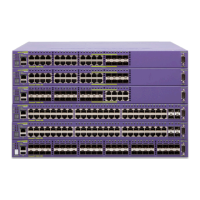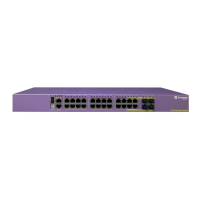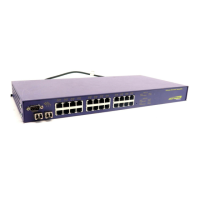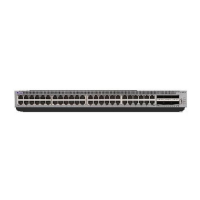Summit 200 Series Switch Installation and User Guide 215
17 IP Multicast Groups and
IGMP Snooping
This chapter describes the following topics:
• Overview on page 215
• Configuring IGMP and IGMP Snooping on page 216
• Displaying IGMP Snooping Configuration Information on page 217
• Clearing, Disabling, and Resetting IGMP Functions on page 217
For more information on IP multicast groups and IGMP snooping, see the following publications:
• RFC 1112—Host Extension for IP Multicasting
• RFC 2236—Internet Group Management Protocol, Version 2
Overview
To constrain the flooding of multicast traffic, configure Summit 200 series switch interfaces to use
Internet Group Management Protocol (IGMP) snooping so that multicast traffic is forwarded only to
interfaces associated with IP multicast entities. IGMP is a protocol used by an IP host to register its IP
multicast group membership with a router. Periodically, the router queries the multicast group to see if
the group is still in use. If the group is still active, a single IP host responds to the query, and group
registration is maintained. When configured to use IGMP snooping, a Summit 200 series switch
“snoops” on IGMP transmissions to keep track of multicast groups and member ports.
IGMP is enabled by default on the switch. However, the switch can be configured to disable the
generation of period IGMP query packets. IGMP query should be enabled when the switch is
configured to perform IP unicast routing.
IGMP snooping is a layer 2 function of the switch, and is enabled by default. It does not require
multicast routing to be enabled. IGMP snooping optimizes the usage of network bandwidth and
prevents multicast traffic from being flooded to parts of the network that do not need it. The switch
does not reduce any IP multicast traffic in the local multicast domain (224.0.0.x).
If IGMP snooping is disabled, all IGMP and IP multicast traffic floods within a given VLAN. IGMP
snooping expects at least one device in the network to generate periodic IGMP query messages. Without
an IGMP querier, the switch stops forwarding IP multicast packets to any port.
When a port sends an IGMP leave message, the switch removes the IGMP snooping entry after 10
seconds. The switch sends a query to determine which ports want to remain in the multicast group. If
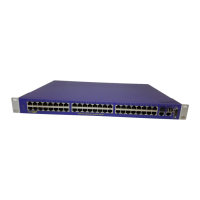
